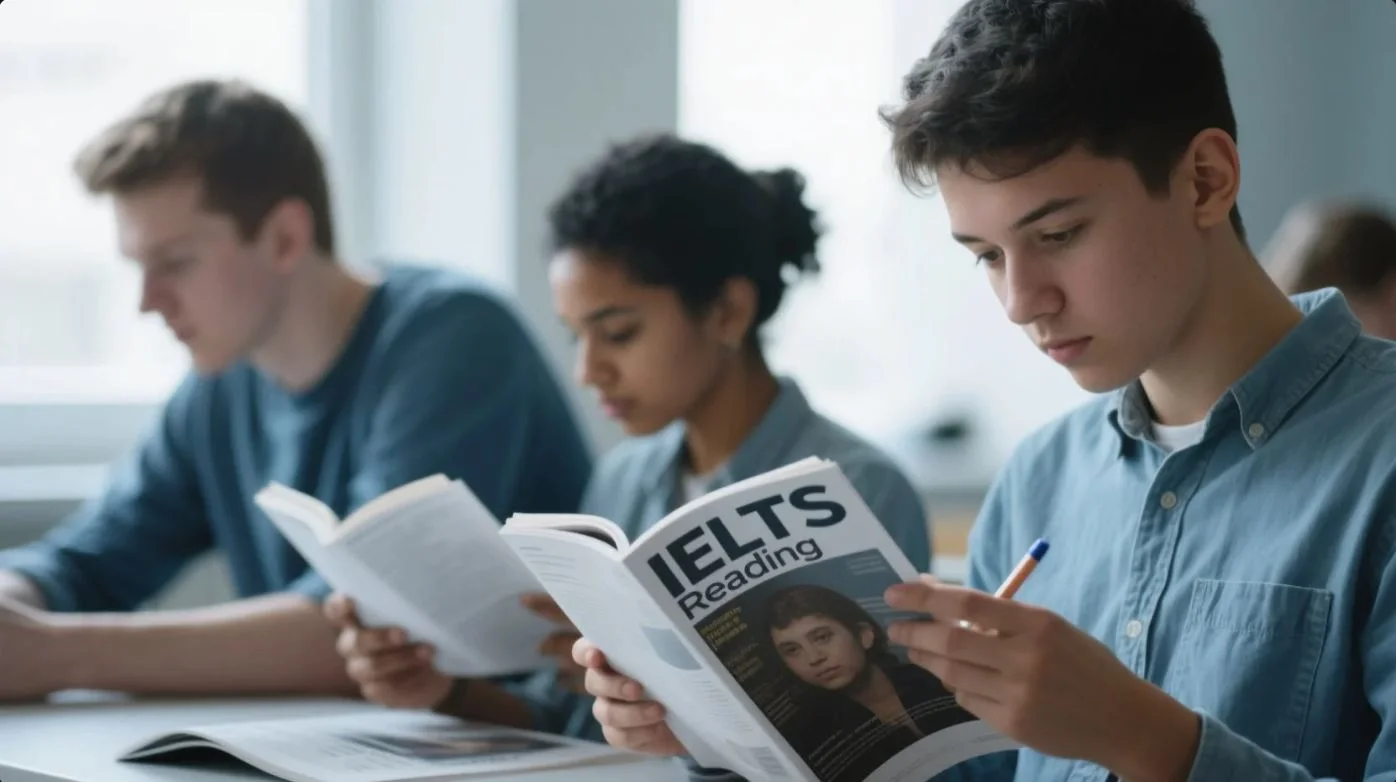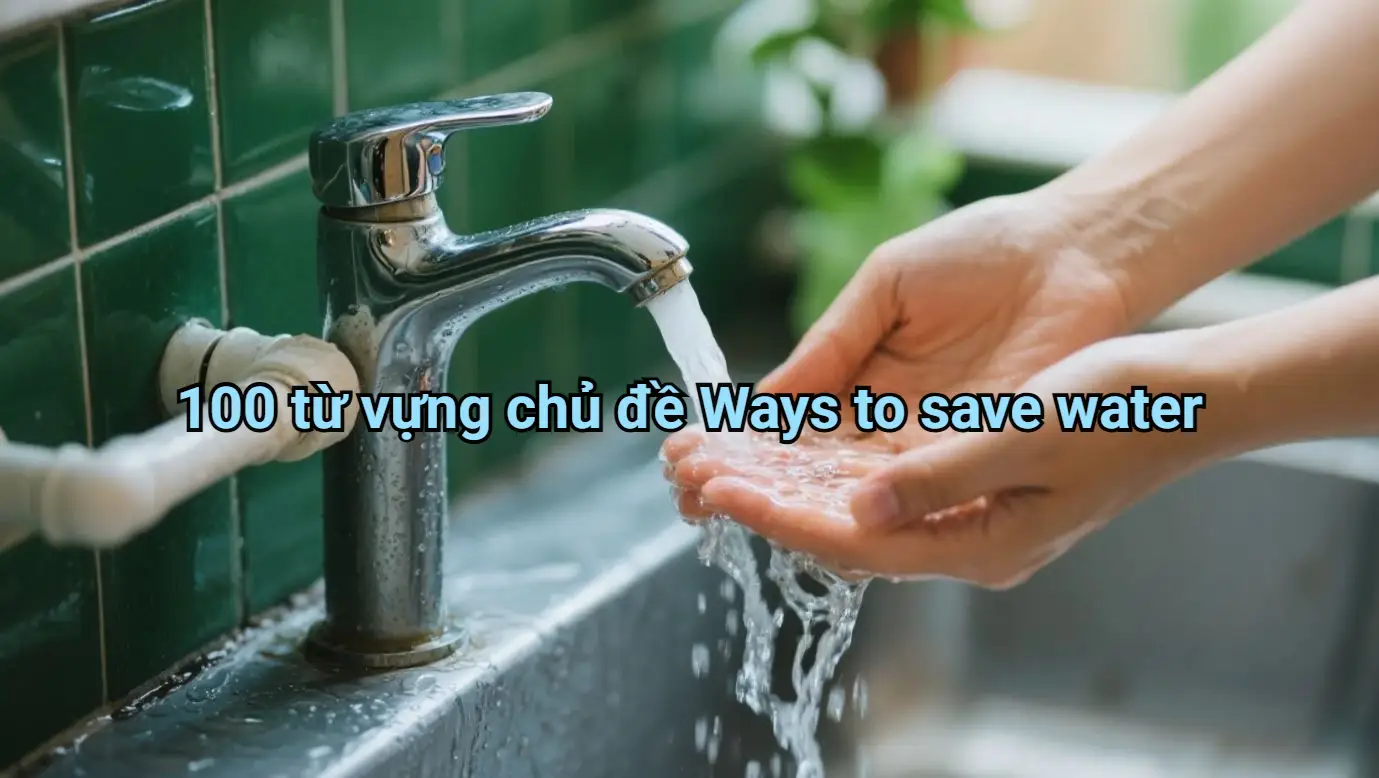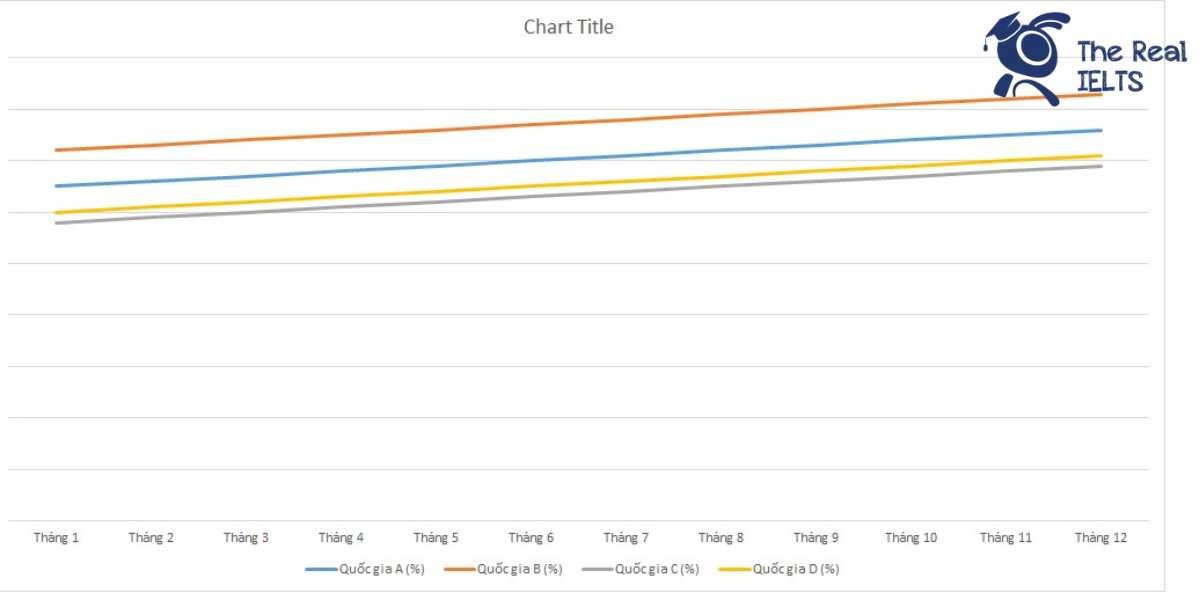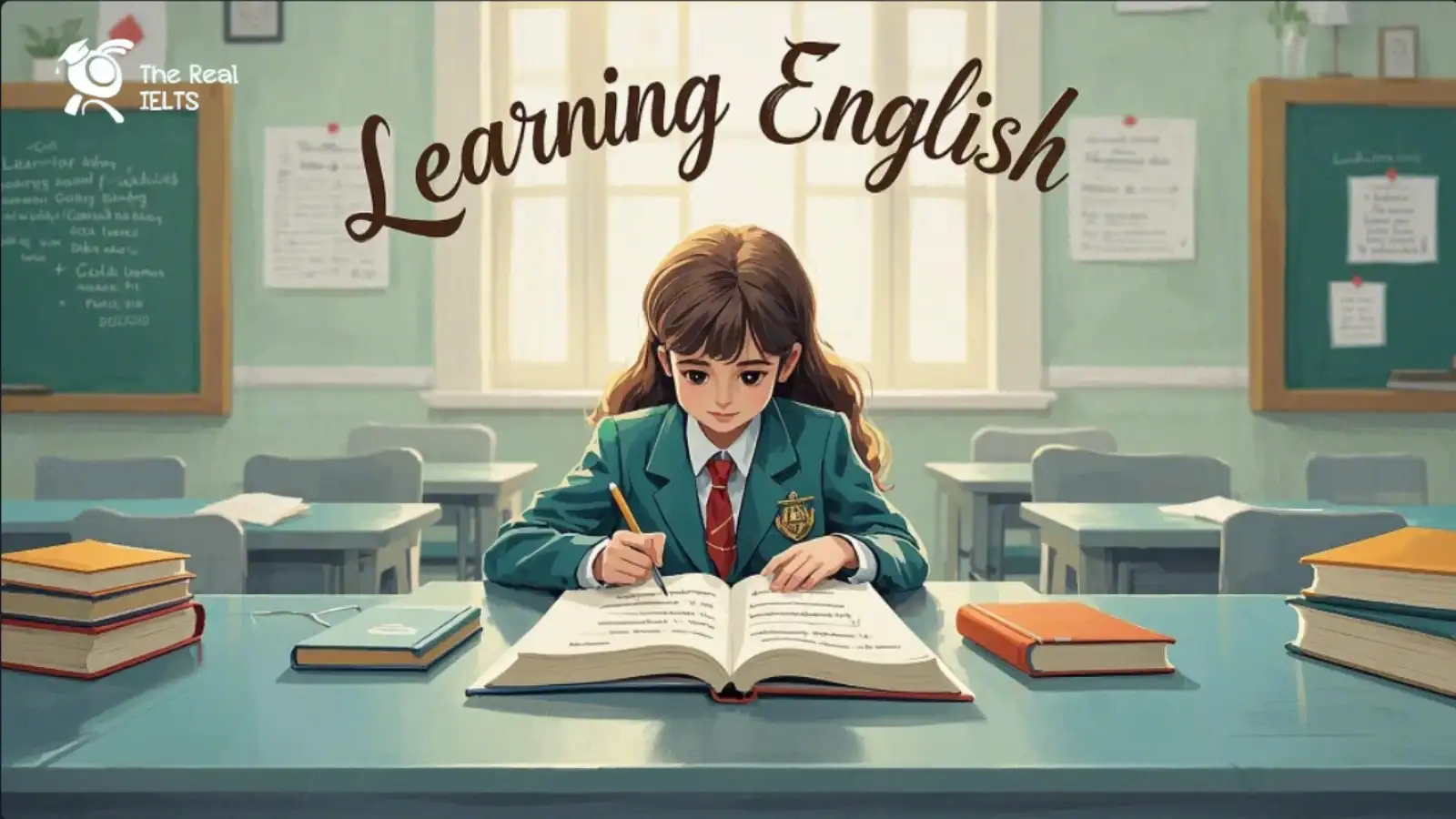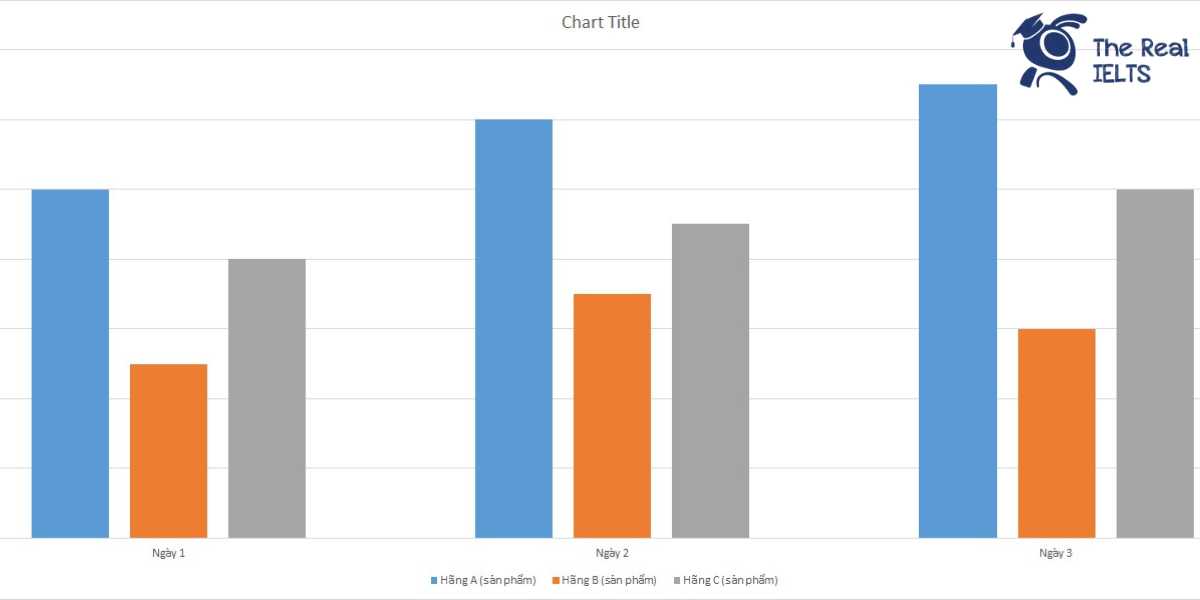Trong kỳ thi IELTS, kỹ năng đọc hiểu là yếu tố then chốt, đòi hỏi thí sinh xử lý nhanh các văn bản học thuật đa dạng. IELTS Reading thử thách khả năng nắm bắt ý chính, phân tích chi tiết và trả lời chính xác 40 câu hỏi trong 60 phút. Để đạt band cao, người học cần xây dựng vốn từ vựng học thuật, rèn luyện kỹ năng skimming, scanning và quản lý thời gian hiệu quả, đảm bảo tối ưu hóa điểm số.
Đọc thêm: IELTS Reading 11 dạng bài phần 7
The Impact of Urban Green Spaces
Urban green spaces, such as parks and community gardens, play a vital role in improving the quality of life in cities. These areas provide residents with opportunities for physical exercise, relaxation, and social interaction. Studies show that access to green spaces can reduce stress and enhance mental well-being. For instance, a 2019 study found that people who spent at least 20 minutes daily in parks reported lower levels of anxiety compared to those who did not. Additionally, green spaces contribute to environmental sustainability by reducing air pollution and supporting local biodiversity. Trees and plants in urban parks absorb carbon dioxide and release oxygen, helping to combat climate change. However, maintaining these spaces can be challenging due to limited funding and urban development pressures. Many cities struggle to balance the need for new buildings with the preservation of green areas. In some regions, community groups have stepped in to protect and manage local parks, ensuring they remain accessible to the public. Despite these efforts, not all urban residents have equal access to green spaces, as wealthier neighborhoods often have more parks than poorer ones. Addressing this inequality is essential to ensure that all city dwellers can enjoy the benefits of nature.
Reading Questions
- Urban green spaces help reduce stress and improve mental health.
- All urban residents have equal access to green spaces.
- Trees in urban parks help reduce air pollution.
- Community groups are the primary managers of urban green spaces.
- The 2019 study showed that spending 30 minutes daily in parks reduces anxiety.
Answers
- True
- False
- True
- Not Given
- False
Explanations
- True: Đoạn văn nêu rằng các nghiên cứu chỉ ra việc tiếp cận không gian xanh có thể giảm căng thẳng và cải thiện sức khỏe tinh thần, phù hợp với câu hỏi.
- False: Đoạn văn đề cập rằng không phải tất cả cư dân thành thị đều có quyền tiếp cận bình đẳng với không gian xanh, vì các khu vực giàu có thường có nhiều công viên hơn khu vực nghèo.
- True: Đoạn văn xác nhận rằng cây cối và thực vật trong công viên thành phố hấp thụ carbon dioxide và thải oxy, giúp giảm ô nhiễm không khí.
- Not Given: Đoạn văn chỉ đề cập rằng các nhóm cộng đồng tham gia bảo vệ và quản lý công viên, nhưng không nói rõ họ là những người quản lý chính.
- False: Đoạn văn đề cập nghiên cứu năm 2019 cho thấy dành ít nhất 20 phút mỗi ngày trong công viên giúp giảm lo âu, không phải 30 phút như câu hỏi.
The Impact of Urban Green Spaces
Urban green spaces, such as parks, gardens, and tree-lined streets, play a vital role in enhancing the quality of life in cities. These areas provide residents with opportunities for recreation, relaxation, and social interaction, which contribute to mental and physical well-being. Studies have shown that access to green spaces can reduce stress levels and improve mood, particularly in densely populated urban environments. Additionally, green spaces help mitigate environmental issues. Trees and plants absorb carbon dioxide, reduce air pollution, and regulate temperatures by providing shade, thus combating the urban heat island effect. In cities like Singapore and Copenhagen, urban planning prioritizes green infrastructure, integrating parks and green roofs into building designs. However, creating and maintaining these spaces can be costly, requiring significant investment in land, resources, and upkeep. In some cities, green spaces are unevenly distributed, with wealthier areas enjoying better access than lower-income neighborhoods. Despite these challenges, the benefits of urban green spaces are undeniable, making them a critical component of sustainable urban development. As cities continue to grow, balancing economic development with the preservation of green spaces remains a key challenge for policymakers.
Reading Questions
- What is one benefit of urban green spaces mentioned in the passage?
A. Increased property prices
B. Reduced stress levels
C. Higher employment rates
D. Improved public transportation - How do green spaces help address environmental issues? (Choose 2 correct answers)
A. They absorb carbon dioxide.
B. They increase urban noise levels.
C. They regulate temperatures.
D. They reduce public transport usage. - According to the passage, what is a challenge associated with urban green spaces?
A. They are difficult to design.
B. They require significant investment.
C. They attract too many tourists.
D. They reduce city revenue. - Which cities are mentioned as examples of prioritizing green infrastructure? (Choose 2 correct answers)
A. Singapore
B. New York
C. Copenhagen
D. Tokyo - What is the main purpose of the passage?
A. To compare urban green spaces in different cities
B. To highlight the benefits and challenges of urban green spaces
C. To propose solutions for creating more green spaces
D. To criticize the lack of green spaces in cities
Answers
- B
- A and C
- B
- A and C
- B
Explanations
- Câu 1: Đáp án đúng là B
- Giải thích: Đoạn văn đề cập rằng “access to green spaces can reduce stress levels and improve mood” (giảm mức độ căng thẳng và cải thiện tâm trạng).
- Sai lầm của các đáp án khác:
- A (tăng giá bất động sản): Không được nhắc đến trong đoạn văn.
- C (tăng tỷ lệ việc làm): Không có thông tin liên quan.
- D (cải thiện giao thông công cộng): Không được đề cập.
- Câu 2: Đáp án đúng là A và C
- Giải thích: Đoạn văn nêu rõ “Trees and plants absorb carbon dioxide” (cây cối hấp thụ CO2) và “regulate temperatures by providing shade” (điều hòa nhiệt độ bằng cách cung cấp bóng râm).
- Sai lầm của các đáp án khác:
- B (tăng mức độ ồn ào): Sai, vì đoạn văn không nói green spaces làm tăng tiếng ồn.
- D (giảm sử dụng giao thông công cộng): Không có thông tin liên quan.
- Câu 3: Đáp án đúng là B
- Giải thích: Đoạn văn viết “creating and maintaining these spaces can be costly, requiring significant investment” (tạo và duy trì các không gian xanh tốn kém, đòi hỏi đầu tư lớn).
- Sai lầm của các đáp án khác:
- A (khó thiết kế): Không được đề cập.
- C (thu hút quá nhiều khách du lịch): Không có thông tin.
- D (giảm doanh thu thành phố): Không được nhắc đến.
- Câu 4: Đáp án đúng là A và C
- Giải thích: Đoạn văn liệt kê “Singapore and Copenhagen” là các thành phố ưu tiên cơ sở hạ tầng xanh.
- Sai lầm của các đáp án khác:
- B (New York) và D (Tokyo): Không được nhắc đến trong đoạn văn.
- Câu 5: Đáp án đúng là B
- Giải thích: Mục đích chính của đoạn văn là trình bày lợi ích (ví dụ: giảm căng thẳng, cải thiện môi trường) và thách thức (tốn kém, phân phối không đồng đều) của không gian xanh đô thị.
- Sai lầm của các đáp án khác:
- A (so sánh không gian xanh): Đoạn văn không tập trung so sánh giữa các thành phố.
- C (đề xuất giải pháp): Không có giải pháp cụ thể nào được đề xuất.
- D (phê phán thiếu không gian xanh): Đoạn văn không mang tính phê phán mà mang tính trung lập, phân tích.
The Role of Technology in Education
Technology has transformed education, reshaping how students learn and teachers deliver knowledge. Many educators argue that digital tools, such as interactive whiteboards and online learning platforms, enhance student engagement by making lessons more interactive and accessible. Studies suggest that students using educational apps often show improved performance in subjects like mathematics and science, as these tools provide personalized feedback. However, some critics warn that excessive reliance on technology may reduce critical thinking skills, as students might prioritize quick answers over deep analysis. In rural areas, access to reliable internet and devices remains a significant barrier, limiting the benefits of digital education for many. Supporters of technology counter that virtual classrooms can bridge geographical gaps, enabling students in remote regions to access quality education. Yet, there is concern among parents that prolonged screen time could negatively affect children’s health, including their eyesight and mental well-being. Schools are experimenting with hybrid models, combining traditional teaching with digital tools, to balance these concerns. While some believe technology will fully replace traditional classrooms in the future, others insist that face-to-face interaction remains essential for social development. The debate continues as educators strive to integrate technology effectively while addressing its challenges.
Reading Questions
- Do educators believe that digital tools increase student engagement?
- Does the passage state that technology improves critical thinking skills?
- Are parents concerned about the health impacts of prolonged screen time?
- Do critics argue that technology is ineffective in rural areas?
- Does the passage claim that technology will eliminate the need for teachers?
Answers
- Yes
- No
- Yes
- Not Given
- Not Given
Explanations
- Câu 1: Đáp án đúng – Yes
- Giải thích: Đoạn văn nêu rõ rằng “Many educators argue that digital tools… enhance student engagement” (Nhiều nhà giáo dục cho rằng công cụ số tăng cường sự tham gia của học sinh). Điều này xác nhận quan điểm đồng tình.
- Câu 2: Đáp án đúng – No
- Giải thích: Đoạn văn đề cập rằng “some critics warn that excessive reliance on technology may reduce critical thinking skills” (một số nhà phê bình cảnh báo rằng phụ thuộc quá mức vào công nghệ có thể làm giảm kỹ năng tư duy phản biện). Điều này cho thấy quan điểm trái ngược với việc công nghệ cải thiện kỹ năng tư duy phản biện.
- Câu 3: Đáp án đúng – Yes
- Giải thích: Đoạn văn nêu “there is concern among parents that prolonged screen time could negatively affect children’s health” (phụ huynh lo ngại rằng thời gian sử dụng màn hình kéo dài có thể ảnh hưởng tiêu cực đến sức khỏe trẻ). Quan điểm này được xác nhận rõ ràng.
- Câu 4: Đáp án đúng – Not Given
- Giải thích: Đoạn văn đề cập rằng “access to reliable internet and devices remains a significant barrier” (truy cập internet và thiết bị đáng tin cậy là rào cản lớn) ở khu vực nông thôn, nhưng không nói rõ rằng các nhà phê bình cho rằng công nghệ không hiệu quả ở những khu vực này. Thông tin này không đủ để kết luận.
- Câu 5: Đáp án đúng – Not Given
- Giải thích: Đoạn văn đề cập đến ý kiến rằng “some believe technology will fully replace traditional classrooms” (một số người tin rằng công nghệ sẽ thay thế hoàn toàn lớp học truyền thống), nhưng không nói gì về việc công nghệ sẽ loại bỏ nhu cầu về giáo viên. Thông tin này không được đề cập.
The Evolution of Renewable Energy
(A) Renewable energy sources, such as solar, wind, and hydropower, have gained significant attention as alternatives to fossil fuels. These sources are abundant and produce minimal greenhouse gas emissions, making them critical in combating climate change. Over the past two decades, global investment in renewable energy has surged, with solar power leading due to its versatility and declining costs.
(B) The rapid growth of wind energy is another key development. Offshore wind farms, particularly in Europe, have expanded due to their ability to harness stronger and more consistent winds. In 2024, wind energy accounted for 8% of global electricity production, a figure expected to double by 2035. However, challenges like high installation costs and environmental concerns, such as impacts on bird populations, remain.
(C) Hydropower remains the largest source of renewable energy globally, contributing to over 16% of the world’s electricity. Large-scale projects, like those in China and Brazil, have boosted its capacity. Yet, critics argue that dams disrupt ecosystems and displace communities, prompting a shift toward smaller, less invasive hydro projects.
(D) Despite progress, renewable energy faces barriers to widespread adoption. In developing nations, limited infrastructure and financing hinder growth. Additionally, the intermittency of solar and wind power requires advanced storage solutions, such as batteries, which are still expensive. Governments are now prioritizing research to address these issues and accelerate the transition to clean energy.
Reading Questions
- A description of the environmental benefits of renewable energy sources.
- A statistic about the contribution of wind energy to global electricity.
- Mention of the challenges faced by hydropower projects.
- Reference to the high costs of installing wind energy infrastructure.
- An explanation of why renewable energy adoption is slow in some countries.
Answers
- A
- B
- C
- B
- D
Explanations
- Câu 1: Đáp án đúng là A
- Giải thích: Đoạn A đề cập rằng các nguồn năng lượng tái tạo “produce minimal greenhouse gas emissions, making them critical in combating climate change” (tạo ra ít khí thải nhà kính, đóng vai trò quan trọng trong việc chống biến đổi khí hậu). Đây là mô tả về lợi ích môi trường của năng lượng tái tạo.
- Câu 2: Đáp án đúng là B
- Giải thích: Đoạn B nêu rõ “In 2024, wind energy accounted for 8% of global electricity production” (Năm 2024, năng lượng gió chiếm 8% sản lượng điện toàn cầu). Đây là thống kê cụ thể về đóng góp của năng lượng gió.
- Câu 3: Đáp án đúng là C
- Giải thích: Đoạn C đề cập rằng “critics argue that dams disrupt ecosystems and displace communities” (các nhà phê bình cho rằng đập nước làm gián đoạn hệ sinh thái và khiến cộng đồng phải di dời). Đây là mô tả về các thách thức của các dự án thủy điện.
- Câu 4: Đáp án đúng là B
- Giải thích: Đoạn B nói rằng năng lượng gió đối mặt với “challenges like high installation costs” (những thách thức như chi phí lắp đặt cao). Đây là thông tin liên quan đến chi phí lắp đặt cơ sở hạ tầng năng lượng gió.
- Câu 5: Đáp án đúng là D
- Giải thích: Đoạn D giải thích rằng “In developing nations, limited infrastructure and financing hinder growth” (Ở các quốc gia đang phát triển, cơ sở hạ tầng hạn chế và thiếu tài chính cản trở sự phát triển). Đây là lý do giải thích tại sao việc áp dụng năng lượng tái tạo ở một số quốc gia diễn ra chậm.
Sustainable Agriculture: A Path to Food Security
Sustainable agriculture is a farming approach that balances productivity with environmental care. Unlike conventional methods, which often deplete soil and rely heavily on chemical fertilizers, sustainable practices aim to maintain soil fertility and reduce pollution. Techniques such as crop rotation, organic fertilizers, and integrated pest management are commonly used. These methods not only preserve ecosystems but also ensure long-term food security.
One key benefit of sustainable agriculture is its ability to adapt to climate change. By diversifying crops, farmers can reduce risks from extreme weather, such as droughts or floods. For instance, planting drought-resistant varieties helps maintain yields during water shortages. Additionally, sustainable farming reduces greenhouse gas emissions by minimizing machinery use and chemical inputs.
However, challenges remain. Sustainable methods often require more labor and knowledge than conventional farming, making them less appealing to some farmers. Initial costs for transitioning to organic practices can also be high. Despite these hurdles, many governments and organizations promote sustainable agriculture through subsidies and training programs to encourage adoption.
The global demand for food is projected to rise by 50% by 2050 due to population growth. Sustainable agriculture offers a solution by producing food efficiently while protecting natural resources. Countries like Denmark and India have already seen success with organic farming initiatives, proving that sustainable practices can meet modern demands. By investing in these methods, humanity can secure a healthier planet and a stable food supply for future generations.
Questions 1–20
- Multiple Choice
What is the primary goal of sustainable agriculture?
A. To maximize crop yields using chemical fertilizers
B. To balance productivity with environmental care
C. To reduce the need for farming labor
D. To eliminate all farming machinery - True/False/Not Given
Sustainable agriculture completely avoids the use of chemical fertilizers. - Yes/No/Not Given
Does sustainable agriculture help farmers cope with extreme weather conditions? - Matching Information
Which paragraph mentions the challenges of adopting sustainable agriculture?
A. Paragraph 1
B. Paragraph 2
C. Paragraph 3
D. Paragraph 4 - Matching Headings
Choose the correct heading for Paragraph 2.
i. Challenges of Sustainable Farming
ii. Adapting to Climate Change
iii. Global Food Demand
iv. Government Support - Matching Sentence Endings
Sustainable agriculture reduces greenhouse gas emissions by…
A. increasing the use of chemical fertilizers.
B. minimizing machinery use and chemical inputs.
C. eliminating crop diversification.
D. relying on conventional farming methods. - Sentence Completion
One technique used in sustainable agriculture is ________ to maintain soil fertility. - Summary Completion
Sustainable agriculture uses methods like crop rotation and organic fertilizers to ________ ecosystems and ensure ________. - Diagram Label Completion
Label the diagram with the correct term from the passage.
[Diagram: A cycle showing farming practices]
A. Crop rotation
B. Chemical fertilizers
C. Machinery use - Short Answer Questions
What is one example of a drought-resistant crop variety mentioned in the passage? - Table Completion
Complete the table with information from the passage.
The rise of renewable energy
The rise of renewable energy has transformed the global energy landscape, offering sustainable alternatives to fossil fuels. Renewable energy sources, such as solar, wind, hydro, and geothermal, harness natural processes to generate power without depleting finite resources. Solar panels, for instance, convert sunlight into electricity, while wind turbines capture air currents to produce energy. These technologies have become more affordable due to advancements in manufacturing and government subsidies, making them accessible to both developed and developing nations.
Renewable energy provides significant environmental benefits. By replacing fossil fuels, it reduces greenhouse gas emissions, mitigating climate change. It also decreases air pollution, improving public health. Economically, the sector creates jobs, with millions employed in installation, maintenance, and research. For example, the wind energy industry has seen rapid growth in countries like Denmark and China.
However, challenges persist. Renewable energy production depends on weather conditions, making it less reliable than traditional power plants. Energy storage systems, such as batteries, are essential but expensive. Additionally, large-scale projects, like offshore wind farms, can disrupt ecosystems, raising environmental concerns. Infrastructure costs and the need for skilled workers further complicate adoption.
Despite these hurdles, the shift toward renewables is accelerating. Governments are setting ambitious targets, with some aiming for net-zero emissions by 2050. Innovations in energy storage and grid technology are addressing reliability issues, ensuring a cleaner, more sustainable future.
(Word count: 250)
Câu hỏi
Multiple Choice (Câu 1–5)
- What is the main focus of renewable energy?
A. Depleting natural resources
B. Harnessing natural processes
C. Increasing fossil fuel use
D. Limiting energy production - Which technology is mentioned as converting sunlight into electricity?
A. Wind turbines
B. Solar panels
C. Hydro dams
D. Geothermal plants - What is one environmental benefit of renewable energy?
A. Increasing air pollution
B. Reducing greenhouse gases
C. Expanding fossil fuel reliance
D. Raising ecosystem disruption - What challenge affects the reliability of renewable energy?
A. Weather dependency
B. Low infrastructure costs
C. Excess energy storage
D. Lack of job opportunities - Which country is noted for growth in wind energy?
A. Brazil
B. Denmark
C. India
D. Australia
True/False/Not Given (Câu 6–10)
- Renewable energy relies entirely on fossil fuels.
- Solar panels are a form of renewable energy technology.
- Renewable energy eliminates all environmental concerns.
- The renewable energy sector creates jobs.
- All countries have achieved net-zero emissions.
Yes/No/Not Given (Câu 11–15)
- Does renewable energy reduce air pollution?
- Are wind turbines used in renewable energy?
- Is renewable energy always reliable?
- Do renewable energy projects face no ecosystem issues?
- Are governments setting emission reduction targets?
Matching Information (Câu 16–20)
Match the following statements to the correct paragraph (A–D):
A. Definition and types of renewable energy
B. Benefits of renewable energy
C. Challenges of renewable energy
D. Future of renewable energy
- Renewable energy reduces greenhouse gas emissions.
- Solar panels convert sunlight into electricity.
- Weather conditions affect energy production.
- Governments aim for net-zero emissions.
- Renewable energy creates jobs.
Matching Headings (Câu 21–24)
Match the following headings to paragraphs A–D:
i. Addressing Renewable Challenges
ii. Renewable Energy Explained
iii. Advantages of Green Energy
iv. Path to a Sustainable Future
- Paragraph A
- Paragraph B
- Paragraph C
- Paragraph D
Matching Sentence Endings (Câu 25–29)
Complete each sentence with the correct ending:
25. Renewable energy is growing because…
26. Weather dependency in renewables…
27. Renewable energy reduces…
28. Large-scale renewable projects…
29. Energy storage systems…
A. affects energy reliability.
B. greenhouse gas emissions.
C. are costly but essential.
D. of technological advancements.
E. can disrupt ecosystems.
Sentence Completion (Câu 30–34)
Complete the sentences with NO MORE THAN TWO WORDS from the passage:
30. Renewable energy harnesses _______ processes.
31. _______ improves public health.
32. Wind energy creates _______ worldwide.
33. Energy storage is _______ but essential.
34. Governments aim for _______ emissions.
Summary Completion (Câu 35–39)
Complete the summary with words from the passage:
Renewable energy uses 35. _______ sources like solar and wind to produce power. It reduces 36. _______ emissions and creates 37. _______. However, challenges include 38. _______ dependency and high 39. _______ costs.
Diagram Label Completion (Câu 40–44)
Label the diagram of a renewable energy system with NO MORE THAN TWO WORDS from the passage:
(Diagram: A solar farm with panels, storage, and grid connection)
40. Energy source: _______
41. Conversion device: _______
42. Environmental benefit: _______
43. Economic outcome: _______
44. Challenge: _______
Short Answer Questions (Câu 45–49)
Answer the questions with NO MORE THAN THREE WORDS:
45. What does renewable energy produce?
46. What reduces greenhouse gases?
47. What affects renewable reliability?
48. What disrupts ecosystems?
49. What supports renewable growth?
Table/Flowchart/Note Completion (Câu 50–55)
Complete the table with NO MORE THAN TWO WORDS from the passage:
| Aspect | Details |
|---|
- Definition | Uses _______ sources |
- Technology | _______ |
- Benefit | Reduces _______ gases |
- Challenge | _______ dependency |
- Country example | _______ |
- Future goal | Net-zero _______ |
Đáp án và Giải thích
- Correct Answer: B
Explanation: Đáp án B đúng vì bài đọc định nghĩa năng lượng tái tạo là việc khai thác các quá trình tự nhiên để tạo ra năng lượng (dòng 2–3, đoạn 1). Các đáp án khác không chính xác: A nói về cạn kiệt tài nguyên, C đề cập tăng sử dụng nhiên liệu hóa thạch, vàD giới hạn sản xuất năng lượng. - Correct Answer: B
Explanation: Tấm pin mặt trời được nhắc đến là công nghệ chuyển đổi ánh sáng mặt trời thành điện (dòng 4, đoạn 1). Các đáp án khác không liên quan đến ánh sáng mặt trời. - Correct Answer: B
Explanation: Năng lượng tái tạo giảm khí nhà kính, giúp giảm biến đổi khí hậu (dòng 2, đoạn 2). Các đáp án khác không đúng: A tăng ô nhiễm, C tăng phụ thuộc nhiên liệu hóa thạch, D không phải lợi ích. - Correct Answer: A
Explanation: Sự phụ thuộc vào thời tiết làm năng lượng tái tạo kém ổn định (dòng 2, đoạn 3). Các đáp án khác không chính xác: B sai vì chi phí cao, C không được đề cập, D ngược với bài đọc. - Correct Answer: B
Explanation: Đan Mạch được nêu là quốc gia phát triển năng lượng gió (dòng 7, đoạn 2). Các quốc gia khác không được nhắc đến. - Correct Answer: False
Explanation: Năng lượng tái tạo không dựa vào nhiên liệu hóa thạch, mà thay thế chúng (dòng 1, đoạn 2). - Correct Answer: True
Explanation: Tấm pin mặt trời là một công nghệ năng lượng tái tạo (dòng 4, đoạn 1). - Correct Answer: False
Explanation: Năng lượng tái tạo gây ra một số vấn đề môi trường, như phá vỡ hệ sinh thái (dòng 5, đoạn 3), không loại bỏ hoàn toàn mối lo ngại. - Correct Answer: True
Explanation: Ngành năng lượng tái tạo tạo ra việc làm trong lắp đặt, bảo trì và nghiên cứu (dòng 5, đoạn 2). - Correct Answer: Not Given
Explanation: Bài đọc không nói tất cả các quốc gia đã đạt được phát thải ròng bằng 0, chỉ đề cập mục tiêu (dòng 3, đoạn 4). - Correct Answer: Yes
Explanation: Năng lượng tái tạo giảm ô nhiễm không khí, cải thiện sức khỏe cộng đồng (dòng 3, đoạn 2). - Correct Answer: Yes
Explanation: Tuabin gió được đề cập là công nghệ năng lượng tái tạo (dòng 5, đoạn 1). - Correct Answer: No
Explanation: Năng lượng tái tạo không luôn ổn định do phụ thuộc thời tiết (dòng 2, đoạn 3). - Correct Answer: No
Explanation: Các dự án năng lượng tái tạo lớn có thể phá vỡ hệ sinh thái (dòng 5, đoạn 3). - Correct Answer: Yes
Explanation: Chính phủ đặt mục tiêu giảm phát thải, như phát thải ròng bằng 0 (dòng 3, đoạn 4). - Correct Answer: B
Explanation: Giảm khí nhà kính được đề cập trong đoạn 2 về lợi ích. - Correct Answer: A
Explanation: Tấm pin mặt trời được nhắc trong đoạn 1 về định nghĩa và loại. - Correct Answer: C
Explanation: Điều kiện thời tiết là thách thức trong đoạn 3. - Correct Answer: D
Explanation: Mục tiêu phát thải ròng bằng 0 được đề cập trong đoạn 4 về tương lai. - Correct Answer: B
Explanation: Tạo việc làm là lợi ích trong đoạn 2. - Correct Answer: ii
Explanation: Đoạn A định nghĩa và liệt kê các loại năng lượng tái tạo, phù hợp với “Renewable Energy Explained”. - Correct Answer: iii
Explanation: Đoạn B nói về lợi ích, phù hợp với “Advantages of Green Energy”. - Correct Answer: i
Explanation: Đoạn C thảo luận thách thức, phù hợp với “Addressing Renewable Challenges”. - Correct Answer: iv
Explanation: Đoạn D nói về tương lai và mục tiêu, phù hợp với “Path to a Sustainable Future”. - Correct Answer: D
Explanation: Năng lượng tái tạo phát triển nhờ tiến bộ công nghệ (dòng 6, đoạn 1). - Correct Answer: A
Explanation: Phụ thuộc thời tiết ảnh hưởng đến độ ổn định (dòng 2, đoạn 3). - Correct Answer: B
Explanation: Năng lượng tái tạo giảm khí nhà kính (dòng 2, đoạn 2). - Correct Answer: E
Explanation: Các dự án lớn có thể phá vỡ hệ sinh thái (dòng 5, đoạn 3). - Correct Answer: C
Explanation: Hệ thống lưu trữ năng lượng đắt đỏ nhưng cần thiết (dòng 3, đoạn 3). - Correct Answer: natural processes
Explanation: Năng lượng tái tạo khai thác các quá trình tự nhiên (dòng 2, đoạn 1). - Correct Answer: reduced pollution
Explanation: Giảm ô nhiễm cải thiện sức khỏe cộng đồng (dòng 3, đoạn 2). - Correct Answer: jobs
Explanation: Năng lượng gió tạo việc làm trên toàn cầu (dòng 5, đoạn 2). - Correct Answer: expensive
Explanation: Lưu trữ năng lượng đắt đỏ nhưng cần thiết (dòng 3, đoạn 3). - Correct Answer: net-zero
Explanation: Chính phủ nhắm đến phát thải ròng bằng 0 (dòng 3, đoạn 4). - Correct Answer: renewable
Explanation: Năng lượng tái tạo sử dụng các nguồn như gió và mặt trời (dòng 2, đoạn 1). - Correct Answer: greenhouse
Explanation: Giảm khí nhà kính là lợi ích (dòng 2, đoạn 2). - Correct Answer: jobs
Explanation: Ngành tạo ra việc làm (dòng 5, đoạn 2). - Correct Answer: weather
Explanation: Phụ thuộc thời tiết là thách thức (dòng 2, đoạn 3). - Correct Answer: infrastructure
Explanation: Chi phí cơ sở hạ tầng là vấn đề (dòng 6, đoạn 3). - Correct Answer: sunlight
Explanation: Nguồn năng lượng là ánh sáng mặt trời (dòng 4, đoạn 1). - Correct Answer: solar panels
Explanation: Tấm pin mặt trời chuyển đổi năng lượng (dòng 4, đoạn 1). - Correct Answer: reduced emissions
Explanation: Giảm phát thải là lợi ích môi trường (dòng 2, đoạn 2). - Correct Answer: job creation
Explanation: Tạo việc làm là kết quả kinh tế (dòng 5, đoạn 2). - Correct Answer: storage costs
Explanation: Chi phí lưu trữ là thách thức (dòng 3, đoạn 3). - Correct Answer: power
Explanation: Năng lượng tái tạo tạo ra điện (dòng 3, đoạn 1). - Correct Answer: renewable energy
Explanation: Năng lượng tái tạo giảm khí nhà kính (dòng 2, đoạn 2). - Correct Answer: weather conditions
Explanation: Điều kiện thời tiết ảnh hưởng độ ổn định (dòng 2, đoạn 3). - Correct Answer: large projects
Explanation: Các dự án lớn phá vỡ hệ sinh thái (dòng 5, đoạn 3). - Correct Answer: technological advancements
Explanation: Tiến bộ công nghệ hỗ trợ tăng trưởng (dòng 6, đoạn 1). - Correct Answer: renewable
Explanation: Sử dụng các nguồn tái tạo (dòng 2, đoạn 1). - Correct Answer: wind turbines
Explanation: Tuabin gió là một công nghệ (dòng 5, đoạn 1). - Correct Answer: greenhouse
Explanation: Giảm khí nhà kính (dòng 2, đoạn 2). - Correct Answer: weather
Explanation: Phụ thuộc thời tiết là thách thức (dòng 2, đoạn 3). - Correct Answer: Denmark
Explanation: Đan Mạch là ví dụ (dòng 7, đoạn 2). - Correct Answer: emissions
Explanation: Mục tiêu là phát thải ròng bằng 0 (dòng 3, đoạn 4).


